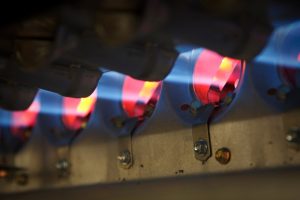 Your furnace works hard to keep you warm. No matter how new or old it is, all that effort adds up throughout the cold winter season we get here in Oregon. The extended wear and tear of running for several days, weeks, and even months at a time leads to the need for maintenance and, inevitably, repairs.
Your furnace works hard to keep you warm. No matter how new or old it is, all that effort adds up throughout the cold winter season we get here in Oregon. The extended wear and tear of running for several days, weeks, and even months at a time leads to the need for maintenance and, inevitably, repairs.
There is a variety of repair needs that your furnace may require. They can range from simplistic (a filter change) to the complicated (a broken fan). The key when you realize you need a furnace repair in Beaverton, OR is to reach out for help from a trained HVAC technician sooner rather than later.
With all that said, we do want to discuss one repair need in particular that you should be more aware of. While no repair should be put off, this repair in particular is one that should be addressed ASAP, no if’s, and’s, or but’s about it!
The Repair in Question: A Cracked Heat Exchanger
One of the most important repairs you can make to your furnace is to fix a cracked heat exchanger. Why? Because when this issue develops, it is more than a matter of your heat faltering or stopping altogether, it is also a risk to your health and safety.
We know you have questions, and thankfully we have answers to them below to help you learn a bit more about this potential fix for your furnace.
What’s a Heat Exchanger?
Your furnace’s heat exchanger is essentially the part which creates heat! Filled with the combustible gases created when your burners ignite the provided natural gases, the heat exchanger warms up and heats the air around it, which is then blown into your house.
Signs of a Problem
A cracked heat exchanger is a problem for two reasons. The first is that it impedes the ability for your furnace to produce heat. The second is that harmful gases, such as carbon monoxide, are able to leak out of the crack and into your home.
Knowing what the signs are that indicate you have a cracked heat exchanger is vital. These include:
- Rattling: A cracked heat exchanger may cause a rattling noise once the furnace turns on, which is caused by the metal expanding as it heats.
- A Strange Pilot Light: Your pilot light should be a steady blue flame. If it is flickering or yellow in appearance, it indicates a problem with the presence of carbon monoxide.
- Symptoms of Carbon Monoxide Poisoning: If you or others in your home have been feeling symptoms such as headaches, dizziness, nausea, and other signs, turn off your furnace immediately.
Take Action!
If you notice any signs that you may have a cracked heat exchanger, make sure you turn your system off immediately and call in a professional for repairs.
Whether your furnace repairs are big or small, The Clean Air Act can help. Our team of professionals is trained, certified, and ready to provide the best possible services to your home comfort system. Our goal is to keep you breathing easy.
Reach out to The Clean Air Act today. Please call Sydni, our Office Extraordinaire, to schedule your next appointment! We will take care of you from there!
